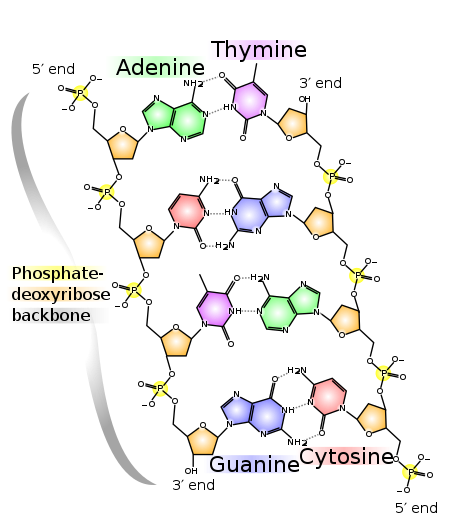http://en.wikipedia.org/wiki/DNA
Eukaryotic organisms (animals, plants,fungi, and protists) store most of their DNA inside the cell nucleus and some of their DNA in organelles, such as mitochondria orchloroplasts. In contrast, prokaryotes (bacteria and archaea) store their DNA only in the cytoplasm. Within the chromosomes,chromatin proteins such as histones compact and organize DNA. These compact structures guide the interactions between DNA and other proteins, helping control which parts of the DNA are transcribed.
Scientists use DNA as a molecular tool to explore physical laws and theories, such as the ergodic theorem and the theory ofelasticity. The unique material properties of DNA have made it an attractive molecule for material scientists and engineers interested in micro- and nano-fabrication. Among notable advances in this field are DNA origami and DNA-based hybrid materials.
The obsolete synonym "desoxyribonucleic acid" may occasionally be encountered, for example, in pre-1953 genetics.
Properties
DNA is a long polymer made from repeating units called nucleotides. DNA was first identified and isolated by Friedrich Miescher and the double helix structure of DNA was first discovered by James Watson and Francis Crick. The structure of DNA of all species comprises two helical chains each coiled round the same axis, and each with a pitch of 34 ångströms (3.4 nanometres) and a radius of 10 ångströms (1.0 nanometres).According to another study, when measured in a particular solution, the DNA chain measured 22 to 26 ångströms wide (2.2 to 2.6 nanometres), and one nucleotide unit measured 3.3 Å (0.33 nm) long. Although each individual repeating unit is very small, DNA polymers can be very large molecules containing millions of nucleotides. For instance, the largest human chromosome, chromosome number 1, consists of approximately 220 million base pairs and is 85 nm long.

No comments:
Post a Comment